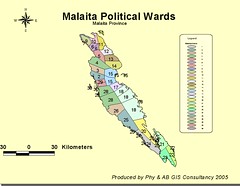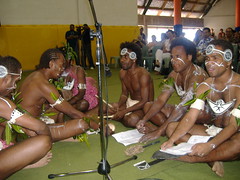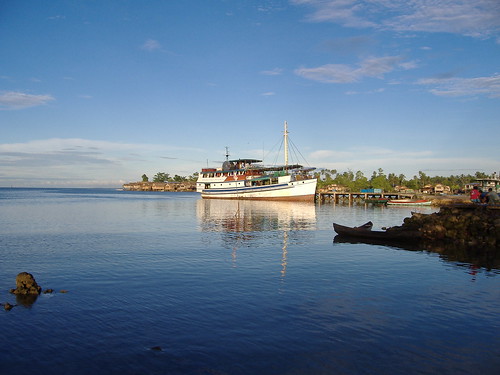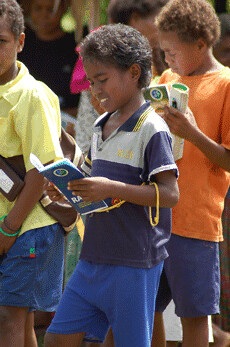| WELKAM |
| .........................................WELCOME.........................................
The Central Malaita Students Association (CMSA) is a multi-dialect and cultural Student Group Consisting of students from Kwara’ae, Langalanga, Kwai and Ngongosila, Malaita Outer Islands, Kwaio and Fataleka.
Our vision and objective is to protect the norms and cultural values of our members while at the same time we enhance our academic knowledge and skills towards the promotion of development and the improvement of living standards in our respective regions.
.............................................DISCLAIMER...............................
The site welcomes any contribution by way of information, comments, news articles, photos etc from its members and interested members of the public to ensure we are well informed of all the developments in our villages, constituencies, regions, islands, country, region and the world at large as well.
However, any transmission of information, news and comments is intended only for the use of the members of the Association. Any use or dissemination of information provided in this site in other websites or medium of information is not the responsibility of the Association, and the Association cannot be held liable for it. The contents of this webpage, unless expressly stated, do not comprise the views of the Association or any representation by the Association, but are views of its individual members.
. |
| LOCATION |
 |
 |
| WHAT'S NEW |
- Central Malaita Student Association(CMSA) would include Malaita Outter Islands
student as of next year.That means if you are from Malaita Outter Islands, you are part of CMSA.
- This site is currently undergoing some major changes.
|
| NOTICES |
| I WILL BE AWAY FOR TWO WEEKS IN THE SOLOMONS. WHILE I AM AWAY, N.G, COULD YOU KEEP OUR SITE UPDATED WITH ALL THE LATEST NEWS FROM HOME. I WILL BE BACK ONLINE IN AUGUST - PM |
QUOTE OF THE DAY |
| "Youth is a blunder; Manhood is a struggle; Old age is a regret - (BENJAMIN DISRAELI (1804 - 1881)" |
 BENJAMIN DISRAELI (1804-1881) BENJAMIN DISRAELI (1804-1881) |
| CHAT BOARD |
| KU'AL HU'AN ALA'ANGA!!!.
|
| CLIPS OF THE TSUNAMI IN SOLOMON ISLANDS |
|
|
| HISTORICAL CLIPS OF THE SOLOMONS |
|
| OTHER SOLOMON ISLANDS CLIPS: MUSIC, SPORTS ETC |
|
| POSTERS |
|

Vakavuku, SISA custom dancers administrator

Central Malaita Dancing Group at the Tsunami Appeal at Laucala Campus administrator

AUKI WHARF administrator

REACHING OUT....A young boy from Kilusakwalo reading through a pamphlet about RAMSIâs work in Solomon Islands which was
distributed during a meeting by a RAMSI Outreach Team to the village yesterday. PICTURE: MOFFAT MAMU administrator

A Malaita Ramo - JanesOceania.com

A house found it self submerged as a result of the Tsunami - Lifhaus.com">
 Jacinta Moli from Central Malaita representing Solomon Islands in Powerlifting during the Commonwealth Games Jacinta Moli from Central Malaita representing Solomon Islands in Powerlifting during the Commonwealth Games
administrator

Tennis Queen Irine George from Central Malaita" ">
|
|
| Friday, October 19, 2007 |
|
FORUM: Fishing Nations Urged To Protect Tuna Stocks
Thursday:
October 18, 2007
(Pacific Islands Forum)
The following speech on fisheries was today delivered by the Hon. Patteson Oti, Minister for Foreign Affairs, External Trade and Immigration, Solomon Islands to the Post Forum Dialogue in Nuku’alofa, Tonga.
The tuna fisheries of the Pacific are an essential economic, social and cultural resource for all Forum member countries – and for many, the only significant renewable economic resource.
The value of catch taken by vessels based and licensed in Pacific Island countries is growing and now totals around US$400 million per year, and more of the catch is being landed and processed in the region, creating jobs and opportunities for adding further value to catches. It is evident that, with good governance and effective management, Pacific Island countries could fulfill their fisheries development aspirations and derive a greater share of the economic benefits that flow from the resources.
Pacific tuna fisheries are now valued in excess of US$2 billion per year, but the majority of the catch is taken by foreign fishing vessels flagged to distant water fishing nations including Japan, China, Taiwan/ROC, Korea, the United States and the European Community.
Two of the key target tuna species of the region, bigeye and yellowfin, are now on the verge of becoming overfished. The current level of fishing effort on bigeye and yellowfin is considered to be unsustainable and the Western Central Pacific Fisheries Commission (WCPFC) Scientific Committee is calling for fishing effort on both stocks to be reduced. In short, there is a genuine risk that these fisheries will go the same way as bigeye and yellowfin stocks in other oceans of the world where they have been fished down unsustainably and significant economic opportunities have been foregone.
There is undoubtedly scope for further development of domestic tuna fisheries in the western and central Pacific. Of the total of approximately 1,200 vessels on the FFA Vessel Register, only 194 are flagged to FFA members and of the total catch of tuna in the fishery of over 2 million tonnes only 466,400 tonnes are taken by national fleets of FFA members. In order to address the potential of the tuna fisheries region, there is clearly an opportunity for national fleets of FFA members to expand, acknowledging that this needs to be done in a manner that does not have an adverse effect on the status of the four key tuna stocks, noting current concerns with bigeye and yellowfin.
There are a number of major regional initiatives being undertaken to address management and conservation of fisheries in the region on which you have received briefing, such as: The Sustainable Development Framework for Pacific Fisheries, The FFA Ecosystem Approach to Fisheries Management (EAFM) Framework, and the Western and Central Pacific Fisheries Commission.
We would urge PFD partners that have a fisheries presence in the region to continue to work together in developing management measures that would address the concerns with respect to yellowfin and the bigeye stocks.
Unlike fisheries for highly migratory natural resources such as tuna, most Pacific Island coastal fisheries do not require international cooperation in their management. Pacific Island coastal fisheries resources are confined to shallower waters entirely within the sovereign jurisdiction of individual island States. However, coastal fisheries also have transboundary implications, particularly export of threatened coastal species and the biosecurity requirements of inward trade, including live aquatic animals for aquaculture.
Most importantly, coastal fisheries are a crucial building block of food security in this region. They provide the majority of the protein eaten by most Pacific Islanders. In fact, because of the scarcity of agricultural land in Micronesia and Polynesia it is coastal fisheries that have made it possible for people to not only survive on these islands, but thrive at a level of nutrition that is the envy of other developing regions.
In many Pacific Island Countries and Territories (PICTs), fish makes up 70–90% of total animal protein intake, and most of this food fish comes from subsistence, rather than commercial fishing. Even taking most of Melanesia into account, fish consumption in PICTs exceeds the minimum required for good nutrition (an average of 35 kg of fish per person per year). And coastal fisheries provide not just food security, but also provide a direct source of income to rural communities.
But maintaining this source of food requires a growing degree of attention in the face of population expansion, increasing human impacts on coastal ecosystems, and the transition from subsistence to more specialized lifestyles. Several coastal invertebrate export fisheries are chronically overfished, and coastal fin-fisheries are coming under increasing pressure as fish prices increase and transport links between rural and urban areas and with the rest of the world, improve.
Pacific Islands are working on two regional fronts to maintain existing coastal fisheries and rehabilitate overfished resources – trying to improve management capacity (making particular use of traditional and community systems and capitalizing on the congruences between modern ecosystem-based concepts and customary traditions of custodianship), and in applying science to better understand, particularly to quantify and monitor, these multispecies coastal and reef fisheries.
SPC members will be defining regional activities needed to support the application of an ecosystem approach to, and the scientific assessment and monitoring of, national Coastal Fisheries at a workshop at the end of October. And adding these building blocks to existing initiatives, the Regional Coastal Fisheries Management Strategy will be reviewed by SPC members in January.
It is not just a matter of consolidating what we’ve got, but planning for the future of fish, in a region whose population is predicted to double in size by 2030. The way forward, assuming existing fishery resources can be consolidated at levels of long-term sustainability, is likely to lie in developing appropriate aquaculture, in promoting affordable small-scale rural tuna fishing, and in finding ways of making more money out of commercial tuna fisheries. There will be a theme discussion on this subject by PICTs at the SPC Conference in November, and a joint SPC/FFA task force will follow up on the directions set by this discussion early in 2008.
Development partners are invited to participate in these proposed and ongoing activities and support the region’s efforts in the management and sustainable development of this critical resource in the region.
Thank you.
|
posted by administrator @ 11:08 AM  |
|
| 1 Comments: |
-
look at JpQYrFvr [URL=http://www.aaareplicahandbags.weebly.com/]faux coach handbags[/URL] for gift NNmETQNt [URL=http://www.aaareplicahandbags.weebly.com/ ] http://www.aaareplicahandbags.weebly.com/ [/URL]
|
| |
| << Home |
| |
|
|
|
NAVIGATIONAL LINKS |
| SCHOLARSHIP SITES AND EMPLOYMENT OPPORTUNITIES |
|
|
| INTERNATIONAL NEWS |
|
|
| LOCAL AND REGIONAL NEWS |
|
|
| OTHER SOLOMON LINKS |
|
|
| SPORTS LINKS |
|
|
| TOK STORI - ALA'ANGA DISCUSSION FORUM |
|
|
| PHOTOS |
|
|
| Regional Bodies |
|
|
| Research Papers and Articles |
|
|
CENTRAL MALAITA STUDENTS |
- 1. ABA, Alan
- 2. ADIFAKA, Margaret
- 3. AFIA, Kabini
- 4. ANII, Dennis
- 5. ANII, Loretta
- 6. ATOA, Betty
- 7. BARE, Gavin
- 8. BATALOFO, Margaret
- 9. BIBIASI, Joseph
- 10. BISAFO, Samson
- 11. BUGA, Benjamin
- 12. BUKA, Glen
- 13. BUNABO, Steven
- 14. ENOCH, Derick
- 15. ETUA, Dennis
- 16. FARADATOLO, David
- 17. FUGUI, Dudley
- 18. GALASAU, Noel
- 19. GERENIU, Collin
- 20. GULIOA, George
- 21. IKA, Silas Phillip
- 22. HUNUEHU, Helen
- 23. IDU, Francis
- 24. KAO, George
- 25. KETEI, Allan
- 26. KINIOU, Aaron
- 27. KWALU, Jerry
- 28. KWATOO, Tony
- 29. LUITOLO, Steven
- 30. MAEKWARE,Tom
- 31. MANATE'E, Wesley
- 32. MANUSALO, Nelly
- 33. MISIBINI, ALick
- 34. MISIBINI, William
- 35. MISITE'E, John
- 36. OTTO, Steven Jude
- 37. RAU, Ishmael
- 38. SALEMANU, Martin
- 39. SIARANI, ANDY
- 40. SUABULU, Gray
- 41. TEGEROBO, Moses
- 42. TOITO'ONA, Joan
- 43. TORILOFA, Frank
- 44. UGULU, Primo
- 45. VAJAH, Jimmy
USP STAFFS AND FRIENDS
- 1. MAE, Paul
- 2. BUTAFA, Emanuel
|
| CURRENCY CONVERTOR |
|
|
| ARCHIVES |
|
|
| Archives |
| GREATEST HITS FROM SOLOMONS ISLANDS (1960s-1980s) |

|


|
|

look at JpQYrFvr [URL=http://www.aaareplicahandbags.weebly.com/]faux coach handbags[/URL] for gift NNmETQNt [URL=http://www.aaareplicahandbags.weebly.com/ ] http://www.aaareplicahandbags.weebly.com/ [/URL]